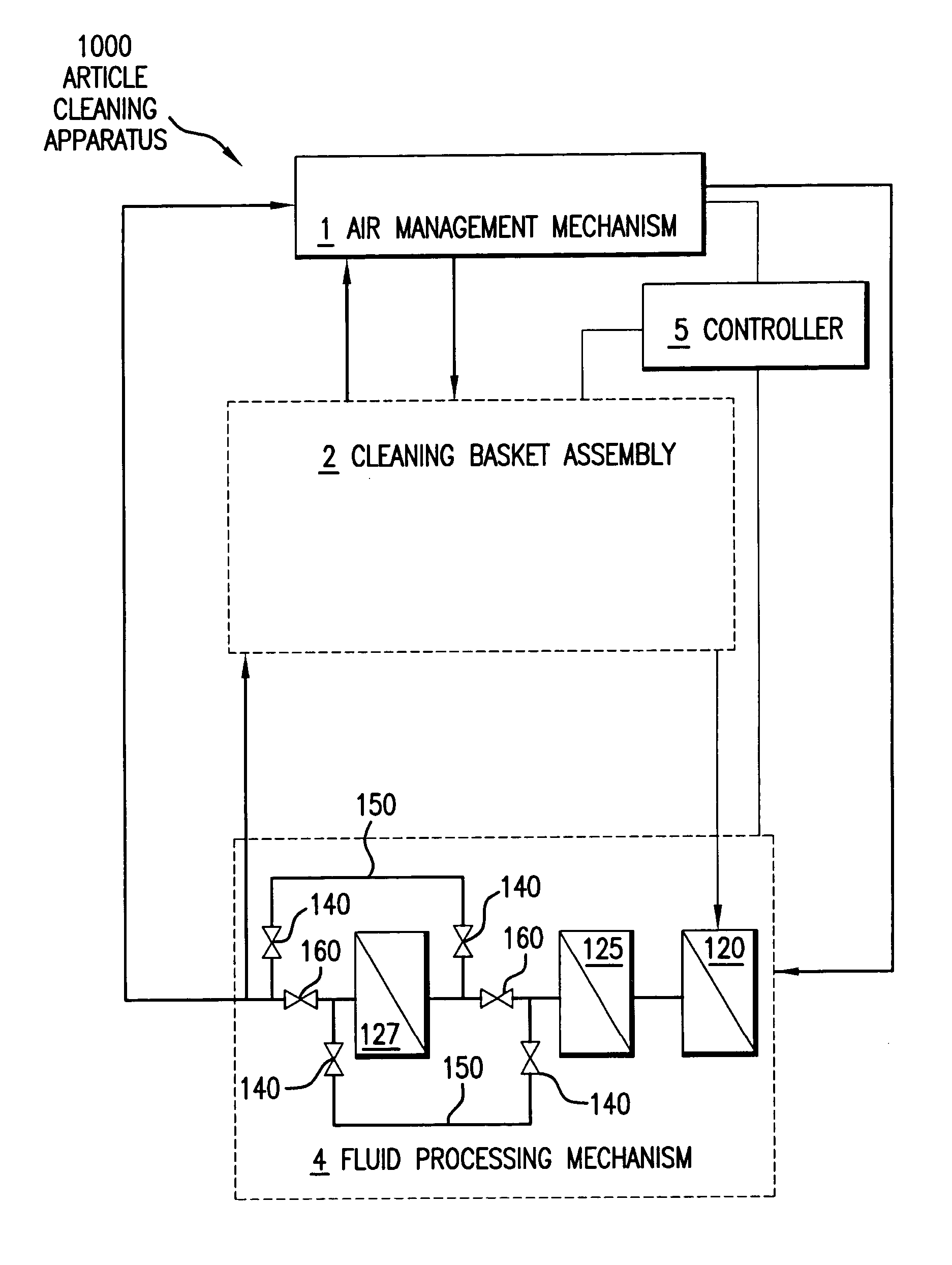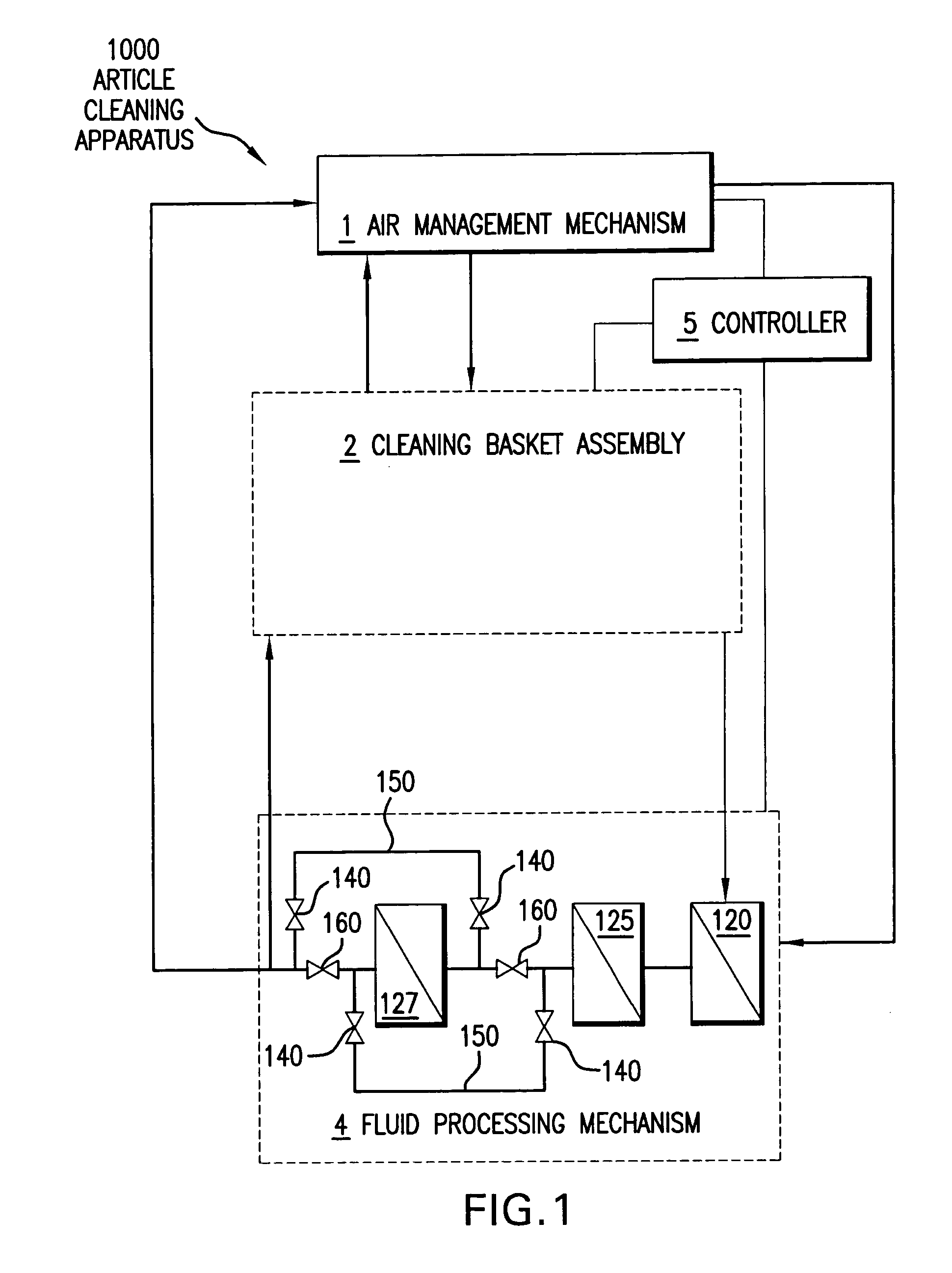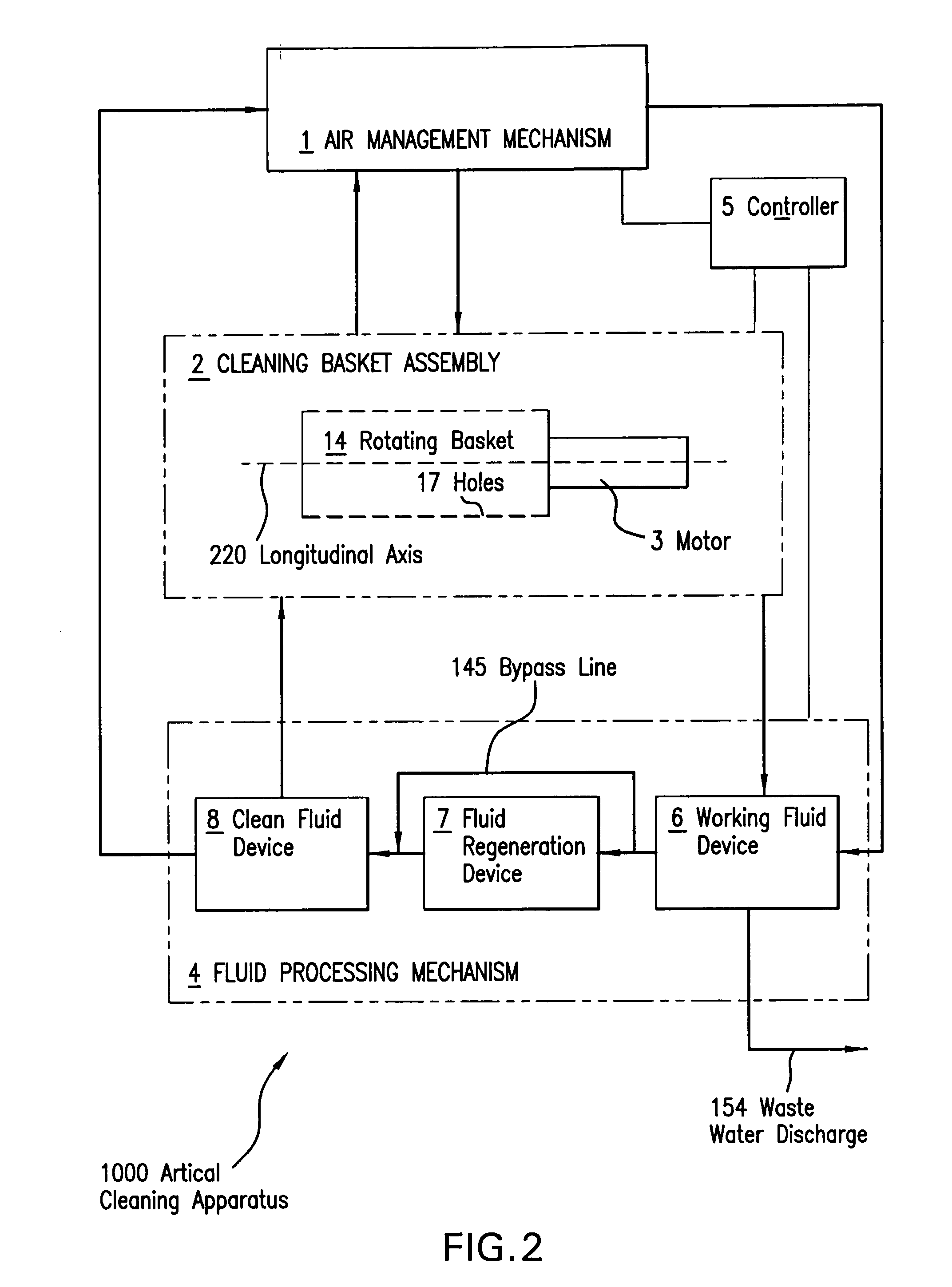Apparatus and method for removing contaminants from dry cleaning solvent
a technology of dry cleaning solvent and apparatus, which is applied in the direction of washing machines with receptacles, liquid/gas/vapor textile treatment, other washing machines, etc., can solve the problems of odor development, biofouling of dry cleaning equipment, and odor generation
- Summary
- Abstract
- Description
- Claims
- Application Information
AI Technical Summary
Benefits of technology
Problems solved by technology
Method used
Image
Examples
Embodiment Construction
[0013] Dry cleaning processes include the use of various solvents with appropriate machinery to accomplish the cleaning of an article. The solvents used in dry cleaning processes solubilize grease related stains such as body oils. Examples of solvents used in dry cleaning processes include kerosene, carbon tetrachloride, trichloroethylene, perchloroethylene, and silicone based solvents.
[0014] The growth of bacteria in solvents used for dry cleaning of clothes can lead to the development of odors in the articles subject to dry cleaning and eventually results in biofouling of the dry cleaning equipment. The growth of bacteria in the solvent can be accelerated by the presence of water in the solvent. The growth of bacteria in the solvent can also result in the development of “bio-slime” on or in components in a dry cleaning apparatus.
[0015] Bacteria, viruses, and other particulate material may be removed from the dry cleaning solvent by filtration through an ultrafiltration filter. T...
PUM
 Login to View More
Login to View More Abstract
Description
Claims
Application Information
 Login to View More
Login to View More - R&D
- Intellectual Property
- Life Sciences
- Materials
- Tech Scout
- Unparalleled Data Quality
- Higher Quality Content
- 60% Fewer Hallucinations
Browse by: Latest US Patents, China's latest patents, Technical Efficacy Thesaurus, Application Domain, Technology Topic, Popular Technical Reports.
© 2025 PatSnap. All rights reserved.Legal|Privacy policy|Modern Slavery Act Transparency Statement|Sitemap|About US| Contact US: help@patsnap.com



